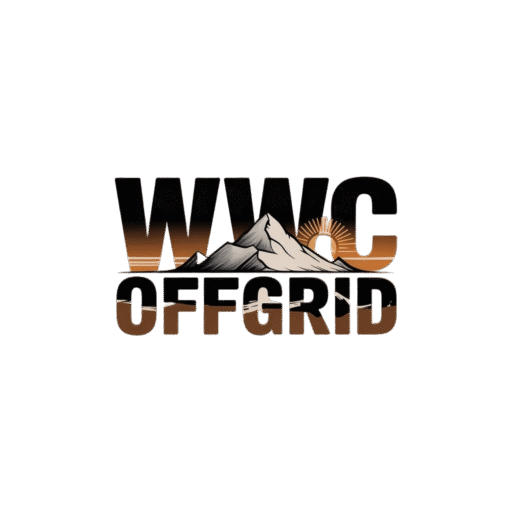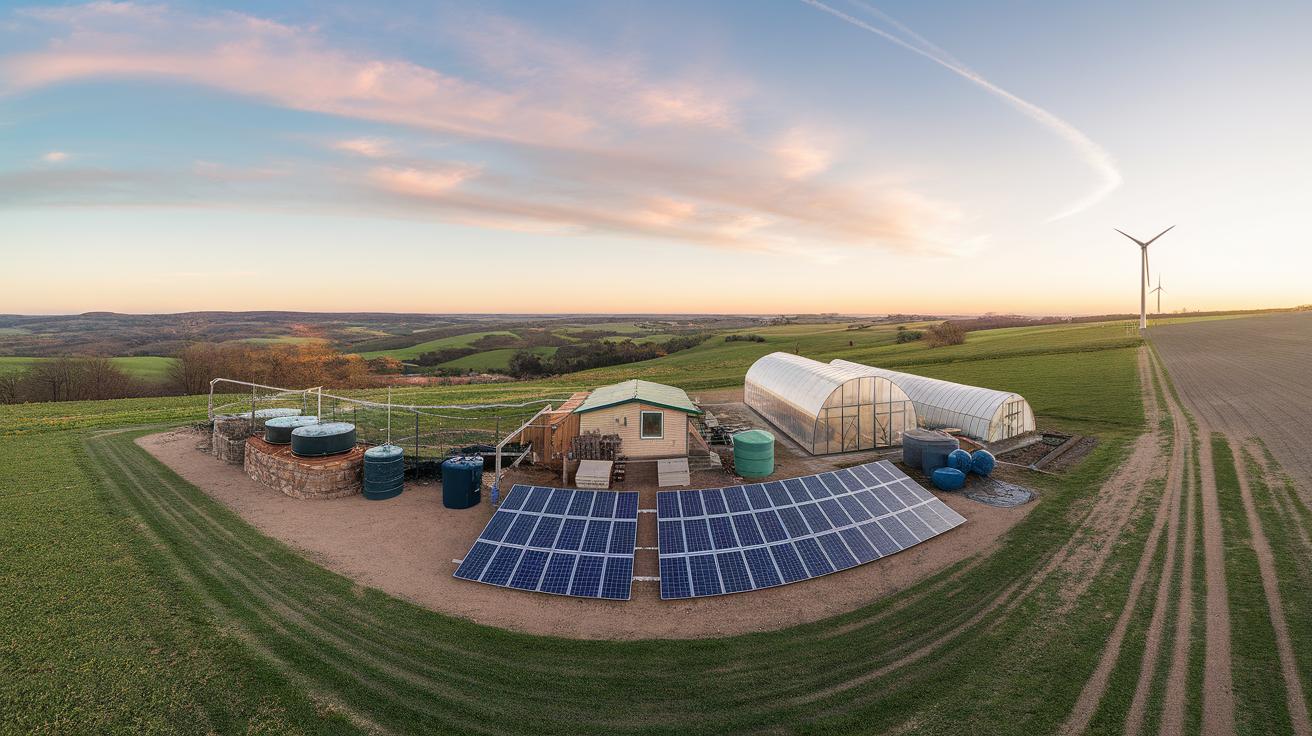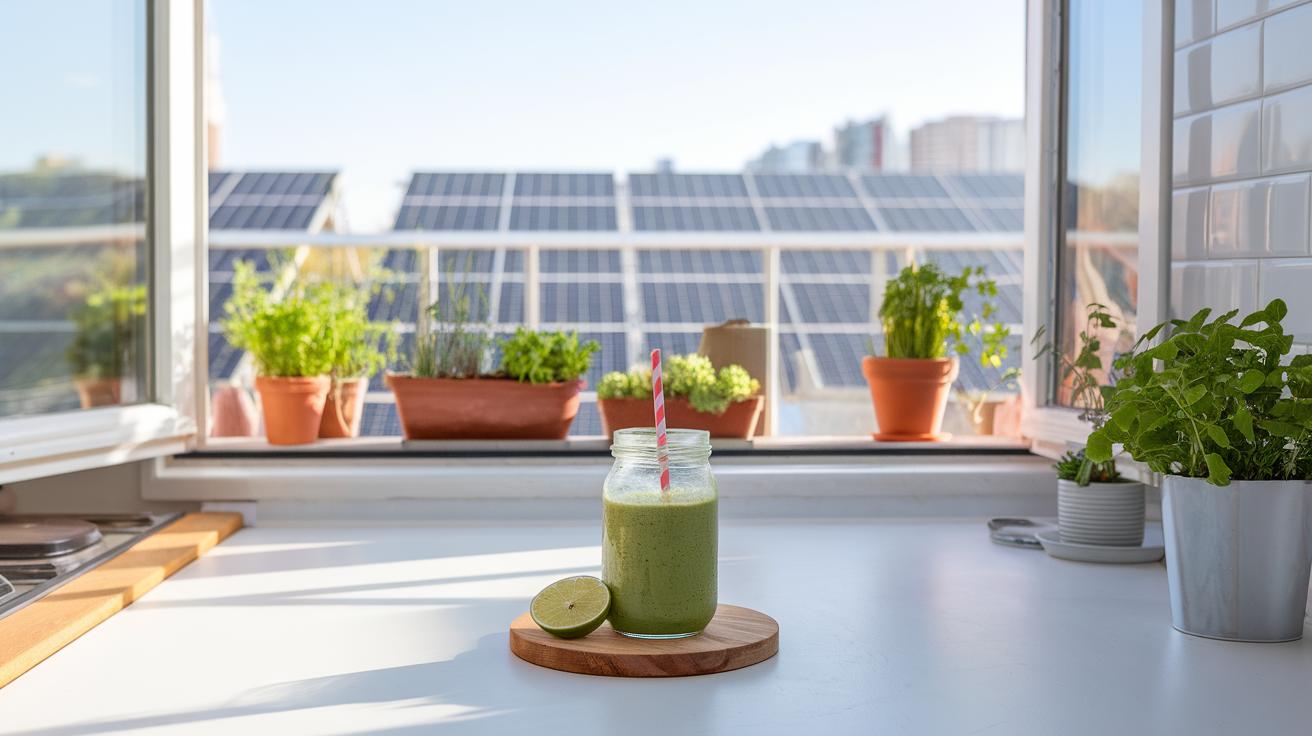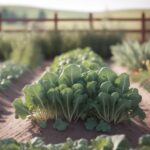Introduction
Rainwater harvesting stands as a straightforward method to collect and store rain for use rather than letting it flow away. This age-old technique has helped households and communities maintain a steady water supply by capturing rain from roofs and surfaces, then directing it to storage options like tanks or cisterns. You can use this water for gardens, livestock, irrigation, and even home needs when treated properly. The beauty of rainwater harvesting lies in its simplicity and ability to supplement water sources efficiently.
Understanding how to harvest rainwater can improve your water resilience, reduce dependency on public supply, and enhance sustainability at home or community scale. You will find that practical steps and proper maintenance make this effort worthwhile. This article offers essential tips and guidance to help you implement a reliable rainwater harvesting system, ensuring you have access to clean water whenever rain graces your area.
Understanding Rainwater Harvesting
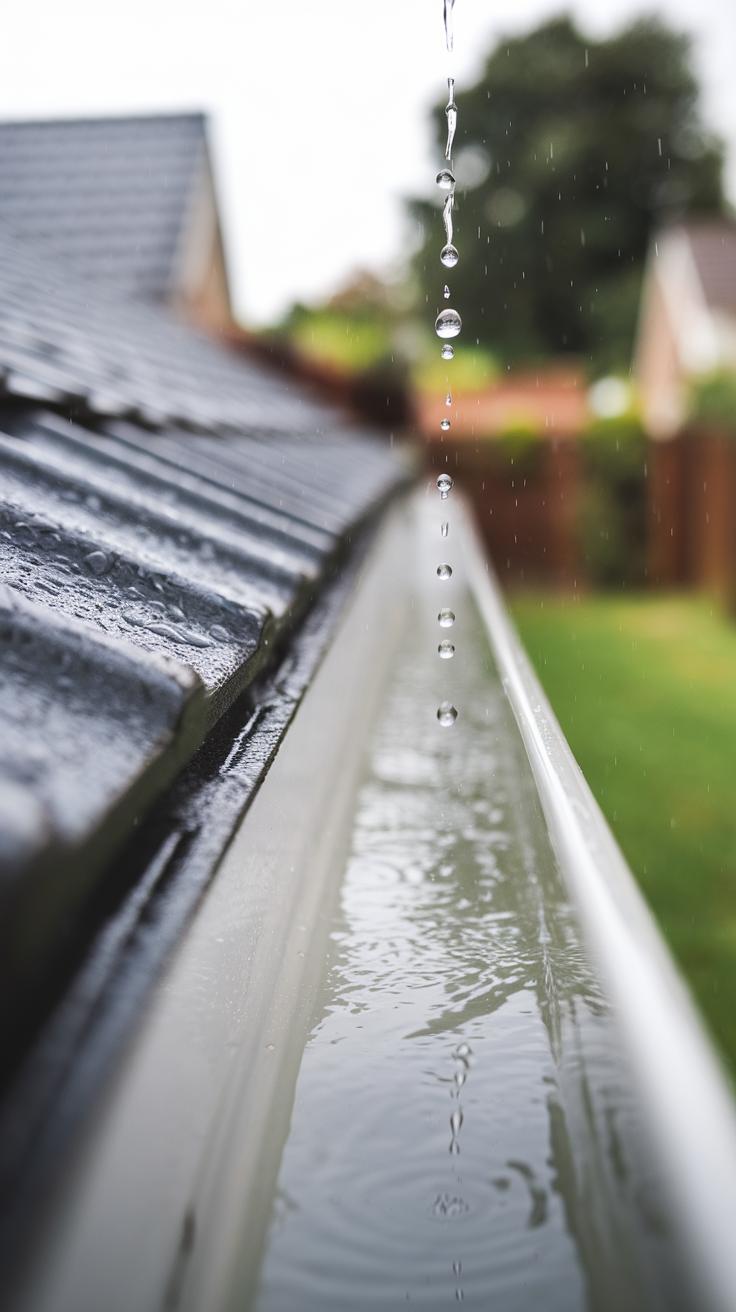
Rainwater harvesting means collecting and storing rainwater from roofs or other surfaces for future use. You catch rainwater by directing it from your roof into gutters, then through pipes into a storage tank or barrel. The stored water can serve many purposes, like watering plants, washing clothes, or even drinking if treated properly.
This method helps individuals and communities manage water more independently. It reduces reliance on municipal water supplies, especially in areas where water is scarce or delivered irregularly. Collecting rainwater lowers the demand on groundwater and rivers, which benefits the environment.
Many use rainwater for irrigation, flushing toilets, or cleaning because it’s often cleaner than pond or river water. Have you considered how much rainwater you could save from your roof during a storm? Even a small system can make a big difference in your water availability.
Why Rainwater Harvesting Matters
Water supply faces growing challenges due to climate change and increased demand. Many communities experience water shortages, causing stress and higher bills. Rainwater harvesting helps you rely less on public water and avoid some of these problems.
This practice lowers your water bill by providing water for tasks that don’t require tap water quality. It also eases pressure on local water systems, supporting conservation efforts that protect freshwater sources you depend on.
Think about your own water use. Could collecting rainwater reduce your monthly expenses? Using rainwater reduces runoff and flooding, helping your community manage storms better. Are you ready to make a change that supports your wallet and the environment?
Where Rainwater Harvesting Fits into Water Supply
Rainwater harvesting works alongside your regular water sources. It provides extra water during dry periods and cuts down on what you need from the city supply. Unlike stormwater harvesting, which collects runoff for flood control, rainwater harvesting focuses on clean water from roofs.
Harvested rainwater usually suits outdoor uses or appliances, while treated city water remains for drinking and cooking. This balance helps you stretch your water supply and reduce your impact.
Consider where you use water in your home. Could rainwater meet some of those needs reliably and safely? Using harvested rainwater is practical when you want to conserve, save costs, and prepare for times when water isn’t available.
Planning Your Rainwater Harvesting System

Planning a rainwater harvesting system starts with understanding your water needs and the conditions at your site. You want a system tailored to how much water you use and how much rain you receive. Begin by looking at your roof area where the water will be collected. Larger roofs catch more water, but if your rainfall is low or uneven, you need to account for that. Rain doesn’t fall the same every month, so reviewing local rainfall data helps you understand when water will be available.
Storage plays a key role. Decide how much water you want to store based on your use and rainfall frequency. Bigger tanks hold more but take up more space and cost more. Smaller tanks require more frequent refilling but fit better in limited spaces. Your system should balance catchment size, rainfall patterns, and storage to secure a steady water supply that fits your life and property.
Assessing Your Water Needs and Resources
Calculate how much water your household uses daily. Think about drinking, cooking, watering plants, and washing. Calculating the total will show what you need from your rainwater system. Next, measure your roof’s catchment area in square feet or meters. Multiply this by the average rainfall for your location and a runoff coefficient (usually around 0.8 for roofs) to estimate how much water you can realistically collect.
For example, if your roof is 1,000 square feet and your area gets 30 inches of rain yearly, you might collect about 16,000 gallons annually. Compare this to your annual water use. Does the collected rainwater cover your needs entirely or only part of it? This match helps decide the system size and storage you require.
Choosing the Right Components
Your system needs several parts working well together. Gutters catch rainwater from the roof and channel it to a storage tank. Pick gutters made of durable materials that suit your local weather. Installing a first flush device keeps the dirtiest water from entering your tank, improving water quality. Filters help remove leaves, dirt, and bugs before water storage.
Storage tanks vary in size and type—plastic, metal, or concrete options are common. Choose a tank that fits your space and water needs. If you plan to use water for indoor needs, a pump will deliver water at the proper pressure. Size the pump to match your flow needs and tank volume. Every component should work efficiently together for a reliable system that saves water without wasting effort or money.
Catchment Surface and Collection
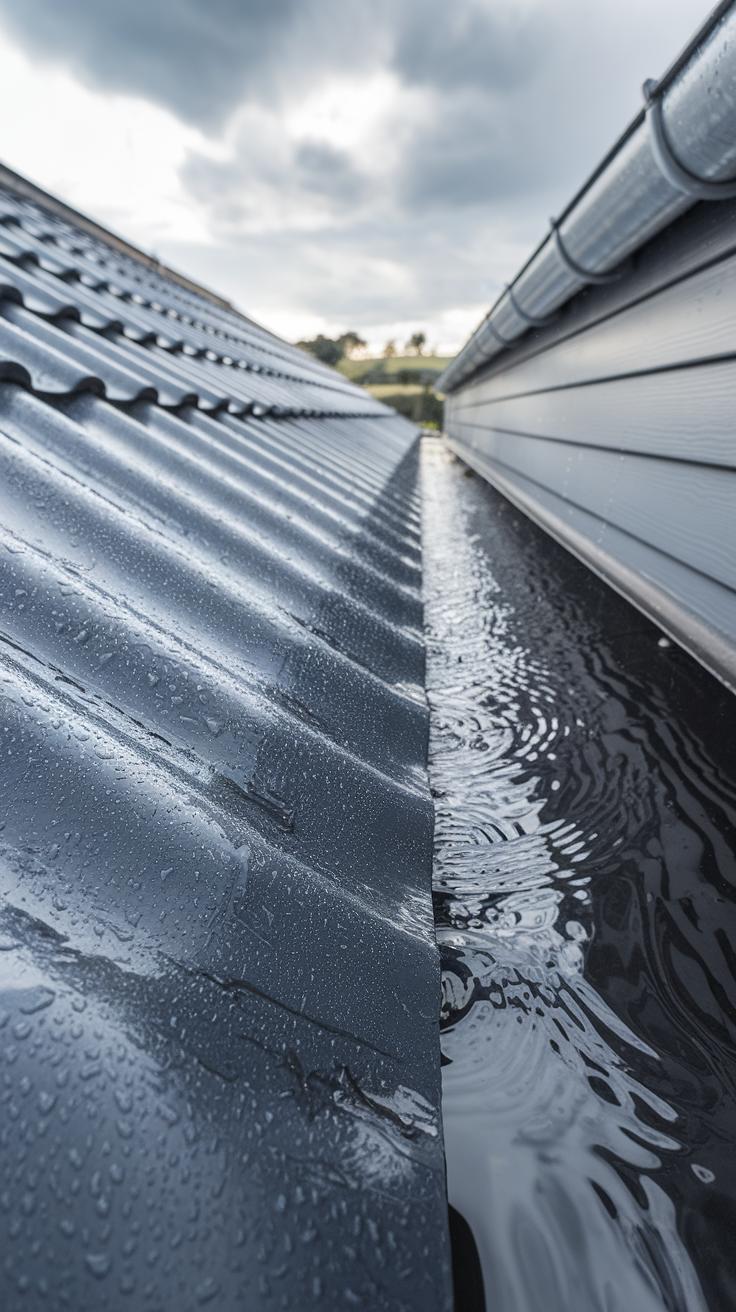
Your catchment surface, usually the roof, plays a key role in collecting rainwater. Its size and condition directly affect how much water you can harvest. Smooth surfaces without cracks or holes help channel water efficiently into your system. You want to make sure your roof slopes enough to direct water flow toward gutters and downspouts without pooling.
Choosing a roof that avoids harmful chemicals or particles will protect water quality. Regular inspection of the roof ensures you catch any damage early. Leaves, dust, and bird droppings often settle on roofs, affecting cleanliness. Removing debris prevents water contamination and blockage in gutters.
Ask yourself: how often do you check your roof after storms? Creating a simple schedule for inspection and cleaning keeps your collection surface ready to capture clean rainwater. Proper maintenance saves time and reduces repairs, supporting a reliable water supply all year long.
Roof Materials Suitable for Rainwater Harvesting
Some roofing materials collect rainwater better and safer than others. Metal roofs, such as aluminum or galvanized steel, work well because they don’t leach harmful substances into the water. They are smooth and easy to clean. Clay tiles and concrete tiles are also good options if they are free of coatings and sealants that release chemicals.
Avoid roofs made with asbestos, tar paper, or treated wood. These materials can contaminate harvested water with harmful substances. Asphalt shingles vary; some contain chemicals that may affect water safety. If you use this material, install a first-flush system that diverts the initial rainwater, which tends to carry most pollutants, away from your storage tank.
Choosing the right roof material makes your system safer and lowers water treatment needs. What type of roof do you have? Considering your roof material helps you plan an effective collection setup that protects your health.
Keeping Your Catchment and Gutters Clean
Debris like leaves, dirt, and twigs can clog gutters, reducing water flow and causing overflow problems. Pollutants that accumulate on the catchment surface wash into the water supply, affecting quality and safety. Cleaning gutters and roofs regularly prevents these issues.
Remove debris after storms or at least once every few months. Use a sturdy brush or leaf blower to clear gutters. Check downspouts for blockages and flush them with water if needed. Installing gutter guards can reduce how often you clean.
Ignoring maintenance risks damage to your system and water contamination. When was the last time you cleaned your gutters? Keeping your catchment surface and gutters free of debris ensures your rainwater stays clean and your system works well. Make maintenance part of your routine to avoid costly repairs later.
Water Conveyance and Filtration

Your rainwater system depends on how well you move water from the roof to storage. Gutters and downspouts play a key role in this process. They must be installed to direct water smoothly without leaks or blockages. Any gaps or misaligned sections let water escape or cause damage. To keep water clean, filters belong at key points before storage. Without proper filtration, leaves, dirt, and debris can clog your system or contaminate stored water. Using simple filters like leaf guards and sediment screens can remove many impurities. You want to avoid bacteria growth and keep your water safe for use. Have you checked if your current gutter setup allows water to flow fast and debris to exit easily? Taking simple steps in conveyance and filtration will save time and protect your water supply.
Gutters and Downspouts Setup
Install gutters with a slight slope toward the downspouts. This angle encourages water to flow freely without pooling. Secure gutters firmly to the roof edge to prevent sagging or gaps that cause leaks. Use seamless gutters when possible to reduce joints, which are weak points for leaks. Position downspouts at the lowest points to speed water movement. Avoid sharp bends or narrow pipes that can block flow. Regularly clear gutters of leaves or nests to keep water moving smoothly. Think about your roof’s size and rainfall before choosing gutter width. When you set gutters correctly, you will catch more water and protect your home’s walls and foundation.
Filtering Rainwater Before Storage
Before water reaches your storage tank, filtering out debris is necessary. Leaf screens fit over gutters to stop large leaves and twigs. You can use mesh screens or metal grids for this. Next, sediment filters catch smaller particles like dirt and sand before water enters the tank. These filters reduce the risk of clogging and improve the clarity of stored water. Consider installing a first-flush diverter, which discards the first batch of rain carrying most roof contaminants. Do you inspect and clean your filters regularly? A clogged filter cuts off water flow and invites contamination. Proper filtration ensures your harvested rainwater stays fresh and safe for daily use.
Storage Solutions and Management
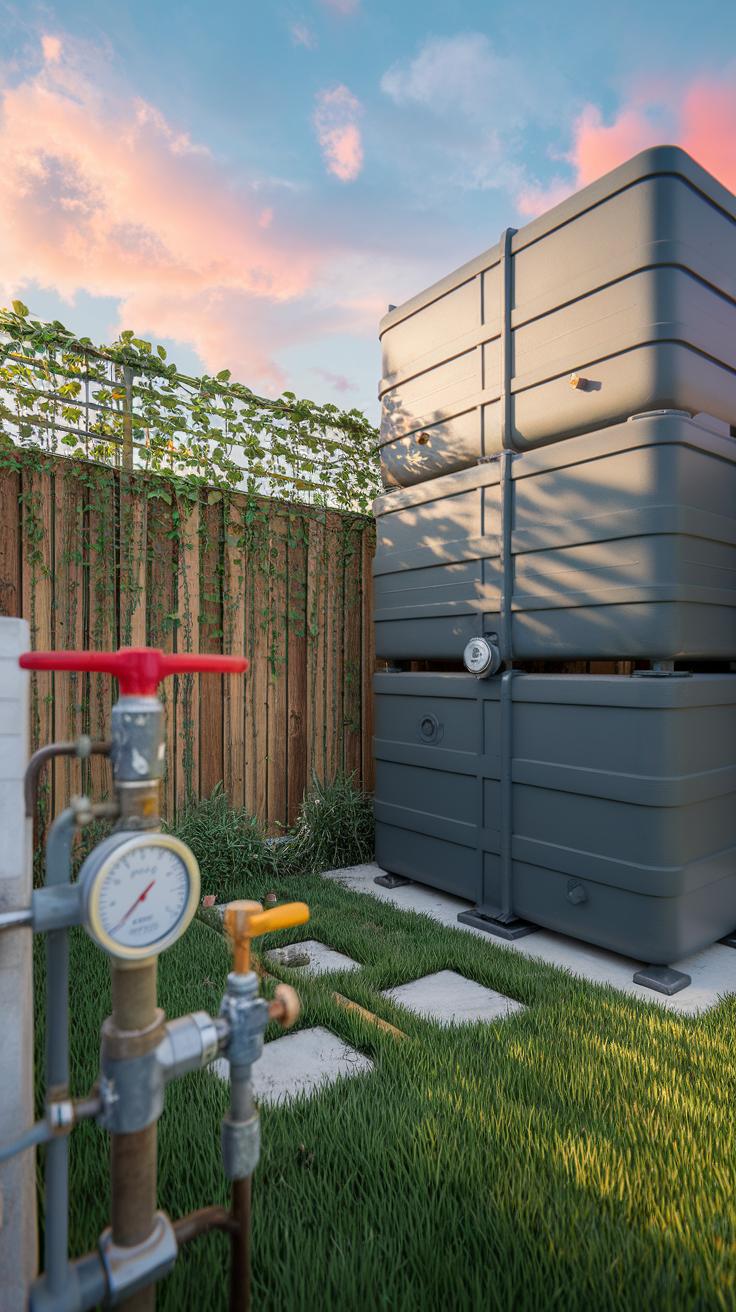
Choosing the right storage tank for your rainwater system affects how well you secure your water supply. Consider your space, budget, and the volume of water you expect to collect before picking a tank. Size matters but so does durability—your tank must withstand weather and potential impact over time. Placement plays a role too, whether above ground for easy access or underground to save space and temperature fluctuation.
Regular maintenance keeps your stored water safe and usable. Check the tank for cracks or leaks and inspect fittings, pipes, and overflow outlets regularly. Prevent debris and insects by installing fine mesh screens over openings. Cleaning your tank annually removes sediment and buildup that can harm water quality. Remember, clear water doesn’t always mean clean; test your water periodically for bacteria or contaminants to ensure safety.
Selecting Storage Tanks
Plastic tanks offer affordable, lightweight options easy to install. They resist rust and corrosion but may degrade under strong sunlight without UV protection. Metal tanks, usually steel, provide strength and last long with proper coating but can rust over time if scratched or damaged. Concrete tanks handle large volumes and stay cool but cost more and require professional installation. Choose based on your climate and budget. Would a lightweight tank suit your needs, or is durability more critical for your location?
Maintaining Stored Water Quality
Keep your tank sealed with a secure cover to prevent dirt and insects from contaminating stored water. Use a tight-fitting lid that resists pests and blocks light, which helps reduce algae growth. Drain and clean the tank on a schedule to remove sludge and harmful bacteria. If your tank lacks an automatic cleaning system, consider manual scrubbing or using a water-safe disinfectant. This keeps water fresh and extends the tank’s life. How often do you inspect your tank to keep your water safe? Could adding a first-flush diverter improve your water quality even more?
Using Harvested Rainwater Effectively
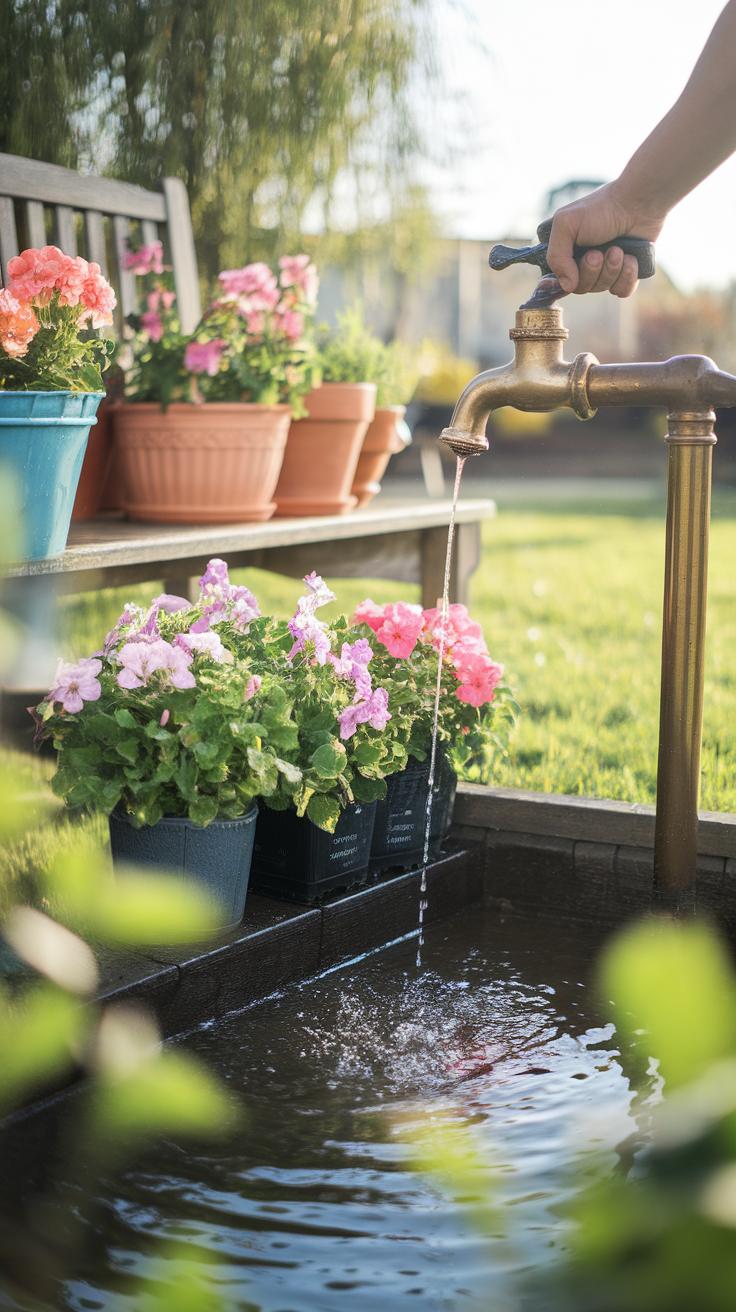
Harvested rainwater offers many practical uses that can reduce your dependence on municipal water. You can save money and protect the environment by using it around your home and garden.
Watering gardens and lawns with rainwater keeps plants healthy and reduces your water bill. Rainwater is free from many chemicals found in tap water, making it better for plants. You might try filling watering cans or connecting drip irrigation systems to your rainwater tank to maximize watering efficiency.
Using rainwater for cleaning tasks like mopping floors or washing cars is another good option. It avoids taxing treated drinking supplies on chores that don’t require potable water. When you collect and channel rainfall effectively, it will be available when you need it most.
It helps to consider how much water your household typically uses daily. Can you design your system to capture enough rainwater to meet these needs? Thinking about how and when you use water lets you prioritize and stretch your harvested supply wisely.
Household Uses for Rainwater
You can use rainwater for many household tasks without extra treatment. Garden irrigation is one of the simplest applications. Just connect your storage tank to sprinklers or drip lines to improve plant health and reduce utility water use.
Toilet flushing consumes a large amount of water daily. Plumbing your rainwater tank to toilet cisterns can cut your water bill significantly. Installing a dual plumbing system may involve some work upfront but pays off quickly.
Laundry machines accept rainwater well if the water is filtered to remove debris. Since rainwater is soft, it can even extend your machine’s life and reduce detergent use.
With proper filtration and disinfection, rainwater can become safe for drinking and cooking. This requires careful treatment and regular testing. Could you invest time and budget to achieve this level of water quality at home?
Irrigation and Outdoor Uses
Applying rainwater outdoors helps conserve treated water and supports your landscape. Timing irrigation to early mornings or late evenings reduces evaporation losses. This ensures plants absorb the maximum moisture.
Small-scale farming benefits from rainwater by providing cleaner water without high mineral content. This can improve crop quality and yield. Using mulches and soil covers with rainwater irrigation also aids moisture retention.
Consider installing rainwater-fed drip irrigation systems for precise watering. This saves water by targeting roots directly. How much water does your outdoor space need, and when do plants benefit most from watering?
Rainwater use outdoors encourages responsible water management. Tracking your rainfall and consumption helps you adjust your system to meet seasonal needs better. What simple changes can you make today to maximize rainwater use in your garden?
System Maintenance and Troubleshooting
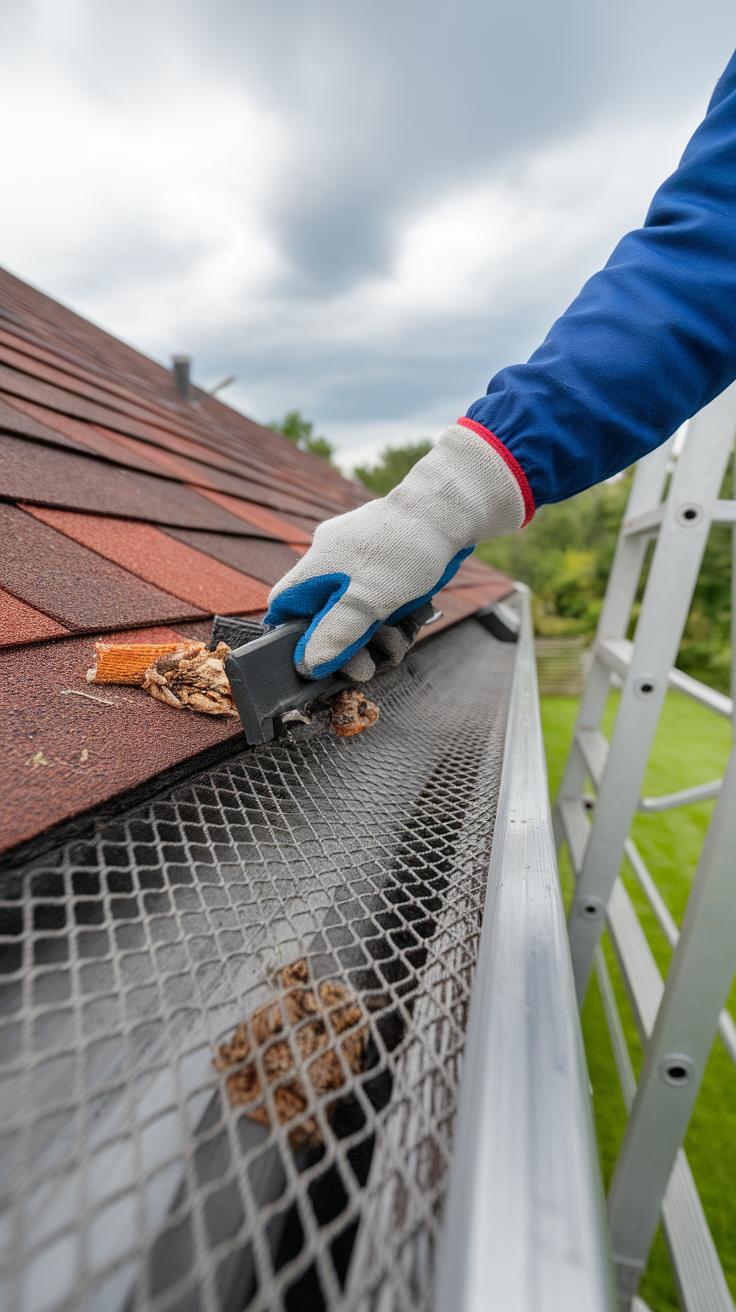
Routine Inspection and Cleaning
Your rainwater harvesting system needs regular attention to stay reliable. Check gutters and downspouts monthly to clear leaves, twigs, and dirt. These blockages slow water flow and invite pests. Clean your filter screens every two weeks to prevent clogs that reduce water quality. Inspect the tank for sediment buildup every six months and flush it out if needed. Make sure all covers and lids fit tightly to keep debris and insects out. Look for cracks or weaknesses around joints and seals during these inspections. Confirm that overflow pipes are clear to avoid water backing up. What if you caught a small leak early before it turned into a big problem? Routine care protects your investment and ensures steady water supply without surprises.
Identifying and Fixing Common Problems
How do you know when your system is underperforming? Watch for leaks as pools of water or damp spots near the tank or pipes. Small cracks can be sealed with waterproof tape or sealant. Blocked gutters show as water overflowing or strange noises during rain. Use a hose or rod to unclog these spots. Algae growth in your tank clouds water and can clog pipes. Scrub tank walls using a brush and safe cleaning agents approved for water containers. Test water clarity and smell periodically; if you notice foul odor, flushing the system or replacing filters might help. Contamination risks rise if your screen mesh is damaged—replace it right away. Troubleshooting soon keeps your rainwater clean and ready whenever you need it.
Legal and Safety Considerations
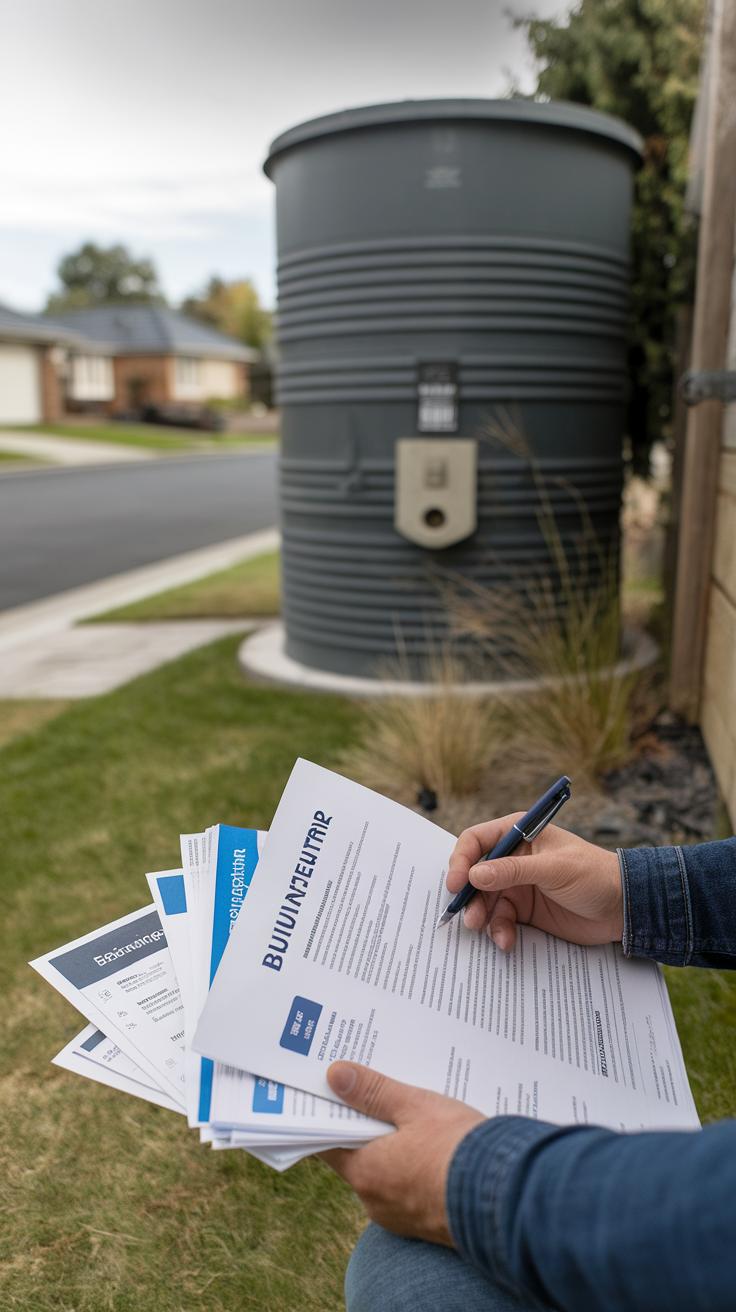
Before you install a rainwater harvesting system, check your local laws. Rules about collecting rainwater vary widely, even between neighboring towns. Some places require permits, others have limits on how much water you can store. Have you contacted your city or county government to find out what applies to your area?
Legal restrictions may affect where you place tanks or how you connect systems to your plumbing. Ignoring these rules can lead to fines or forced removal of your system. Taking the time to understand permits protects your investment and keeps your setup compliant.
Safe water use depends on how you store and handle the harvested rainwater. Avoid letting the water mix with sewage or other harmful sources. Keep tanks covered to reduce contamination from dirt, insects, or animals. Do you regularly inspect your tanks and gutters for debris or damage?
If you plan to use rainwater for drinking or cooking, treat it properly. Filtration, UV treatment, or boiling may be necessary to remove bacteria and viruses. Follow recommended safety standards to protect your health. Safe handling ensures your rainwater remains a dependable source for your home.
Understanding Local Regulations
Local laws define what you can and cannot do with rainwater harvesting. These rules can differ by state, county, or city. Some places encourage it with incentives. Others limit it due to water rights or environmental concerns. Have you checked the website of your local water authority or talked to a community official?
You might need a permit to install large tanks or connect rainwater to household plumbing. Sometimes restrictions apply to the volume you can collect. Knowing these details before you build saves time and money later. Regulations help balance water use and protect public systems.
Health and Safety Tips
Keep your rainwater safe by preventing cross-contamination. Avoid connecting rainwater tanks to your main water line without proper backflow prevention devices. Do you have a plan to separate harvested rainwater from sewage or other water sources?
Regular cleaning and maintenance reduce the risk of bacteria growth. Use screens on gutters and downspouts to stop leaves and animals from entering the system. If you intend to drink the rainwater, treat it with suitable methods such as filtration and UV light. Testing the water periodically ensures it remains safe.
Safe storage helps avoid mosquito breeding and algae formation. A well-sealed container and shaded placement improve water quality. Following these steps protects your family and maximizes the benefit of your rainwater harvesting system.
Improving and Expanding Your System
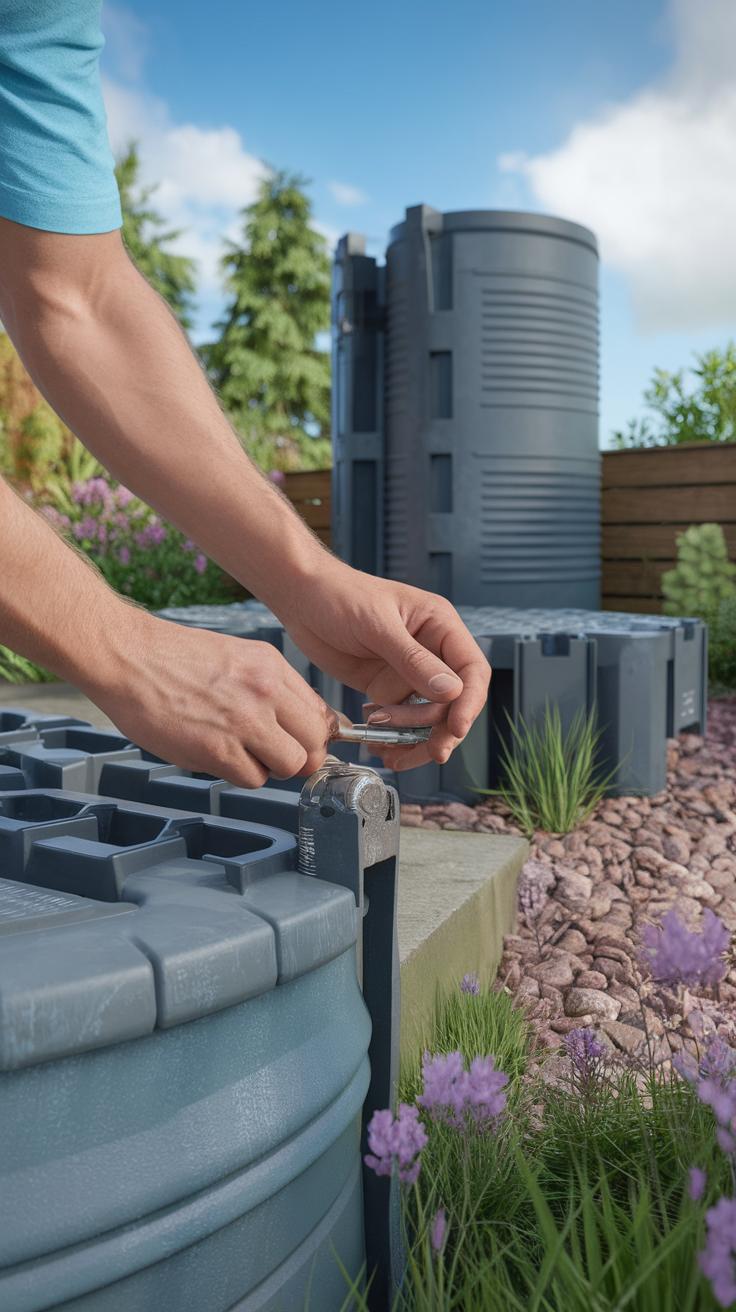
Enhancing your rainwater harvesting system over time helps secure a steady water supply. Upgrading key parts like pumps can boost water flow, making it easier to distribute collected water throughout your home or garden. Adding more storage tanks lets you catch and keep extra water during heavy rains, reducing waste and increasing reliability.
Replacing old filters with better ones improves water quality and protects your plumbing. Think about how much water you use daily. Could larger tanks or more efficient pumps reduce times you run low? Tracking your usage helps guide upgrades that fit your needs.
Tying your rainwater system to other water-saving methods cuts down your overall water use. Greywater reuse treats water from sinks or showers for gardening or flushing toilets. Pairing this with drought-resistant plants means your garden thrives on less water. Can combining these approaches lower your water bills and help during dry months?
Upgrading System Components
Adding a pump increases water pressure so stored water reaches taps or sprinklers easily. This is useful if your tank sits below ground level or far from where you need water. Expanding storage means capturing more rain during storms, allowing supply to last longer between rains.
Upgrading filters removes dirt and debris better, keeping water cleaner. For example, switching to a multi-stage filtration system can help prevent plumbing clogs and improve water taste. Thoughtfully choose filters to match how you plan to use your water, whether for irrigation, household chores, or drinking after treatment.
Monitoring tanks and pipes regularly helps spot leaks or clogs early, so your system works at peak efficiency. Have you considered automating some parts to control water flow or alert you when tanks are full or empty?
Combining Rainwater Harvesting with Other Practices
Linking rainwater collection with greywater reuse provides a fuller approach to water conservation. You reuse wash water for flushing toilets or watering plants, reducing your demand on both rainwater and municipal supplies. This approach stretches your water budget further.
Incorporating drought-resistant landscaping reduces how much water your garden needs. Plants native to your region tolerate dry spells, so they thrive with less watering. This lessens stress on your stored rainwater, holding it in reserve for high-demand times or indoor uses.
Consider integrating drip irrigation systems that deliver water directly to plant roots. This method wastes less water than sprinklers. Could combining these ideas make your home more self-sufficient and resilient?
Conclusions
Using rainwater harvesting is an effective way to bolster your water supply. By capturing rain from roofs and storing it, you create an independent water source that benefits gardens, small-scale irrigation, and domestic use. This approach conserves water, reduces pressure on municipal systems, and supports environmental sustainability. Keeping your rainwater system well-maintained ensures its efficiency and longevity.
When you invest time in understanding collection methods, filtration, and storage options, you create a dependable water reserve. Think about the needs of your household or community to choose the right setup. With the tips shared here, you can build a system that serves you well through dry periods and benefits your environment year-round.
